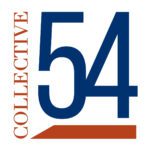Boutiques run on cash. They do not run on net income nor EBITDA. Some boutiques neglect the management of cash flow. Take a moment to understand how you can improve the flow in and out. In this podcast episode, we look at where you can find cash flow when scaling a business.
TRANSCRIPT
Sean Magennis [00:00:15]: Welcome to the Boutique with Capital 54, a podcast for owners of professional services firms. This show aims to help you grow, scale, and sell your firm at the right time, for the right price, and on the right terms.
I’m Sean Magennis, CEO of Capital 54 and your host on this episode. I will make the case that boutiques run on cash-flow. They do not run on net income or EBITA. I’ll try to prove this theory by interviewing Greg Alexander, Capital 54’s chief investment officer. Greg is an expert at helping firm owners boost cash flow. Greg, good to see you. Welcome.
Greg Alexander [00:01:03]: Hey. Good to be with you. Do you remember the movie Jerry Maguire and the famous line, show me the money? Let’s start with that. So on the count of three, let me hear your best “Show me the money.” Are you ready?. One, two, three.
Sean Magennis [00:01:19]: Show me the money.
Greg Alexander [00:01:24]: Awesome, you’re a great sport. I think we’re ready to begin.
Sean Magennis [00:01:27]: Yes, we are, funny enough. I just watched that again recently. It’s a great movie.
Why is Cash Flow So Important When Scaling a Business?
Sean Magennis [00:01:32]: Okay. So why is cash flow more important than net income and EBITDA for a firm trying to scale.
Greg Alexander [00:01:41]: Sure. And when I say casual, I mean simply cash coming in and going out of a professional services firm. And it is different than net income. Net income is a profit a firm makes for a period and is often calculated for tax purposes. Whereas cash flow comes from daily activities, and cash flow is also different from EBITDA because EBITDA does not consider capital expenditures, which are most definitely cash outflows.
Greg Alexander [00:02:06]: As to why it is more important to boutiques trying to scale, its firms run on cash. They are scaling a business, which means they are pouring the cash back into the business. They would rather invest it than give it to the government or a potential acquirer.
Sean Magennis [00:02:22]: Completely understood. And it’s often said entrepreneurs often seriously mismanage cash flow. Do you agree with the statement? And if so, is it relevant to our listeners?
Greg Alexander [00:02:34]: Yes and yes. In my capacity as Chief Investment Officer at Capital 54, I see our listeners, a.k.a. owners of boutique service firms, trying to raise capital when they don’t need it. They think they need X amount of capital to scale when in fact, they’re often generating enough cash from operations to fund scaling.
Sean Magennis [00:02:57]: And Greg, why does this happen?
Greg Alexander [00:02:59]: This happens because sometimes owners do not know how to boost cash flow because they are not measuring it properly.
Sean Magennis [00:03:06]: Please explain that to our listeners.
How to Scale a Service Business: Ways to Boost Cash Flow
Greg Alexander [00:03:08]: The best way to find ways to boost cash flow is to measure it correctly, and the best way to measure it is at the project level. Measuring cash flow in the aggregate hides waste. Here’s a recent example. My team recently performed due diligence on a public relations firm seeking to raise growth capital, and they used the following formula. I wish I was on a whiteboard but bear with me here audio audience.
So cash flow per project equals cash flow divided by fees times fees divided by staff times, and staff divided by project. This revealed a healthy six hundred and fifty thousand dollars per project in this instance. This told me the firm was generating plenty of cash to fund it’s aggressive expansion plan. Yet they were on a Zoom with me looking to raise money, claiming they did not have enough cash. I’m not sure where the cash was leaking, but it was leaking like an old faucet.
Sean Magennis [00:04:14]: And Greg, the point is to measure cash flow at the project level, not at the firm level.
Greg Alexander [00:04:19]: Yes, exactly.
Sean Magennis [00:04:23]: And now a word from our sponsor. Collective 54 is a membership organization for owners of professional services firms. Members join our mastermind group to work with their industry peers to grow, scale, and someday sell live firms at the right time, for the right price, and on the right terms. Let us meet one of the Collective 54 members.
Nish Parikh [00:04:49]: Hello. My name is Nish Parikh. I owned Rangam Consultants, where empathy drives innovation every single day. We serve Fortune Global 500 companies for their I.T. and all business professional leads. We serve customers in the United States, Canada, Ireland, UK, and India.
These customers turn to us for help with their disability and autism hiring programs. Every one of us is connected to someone on the autism spectrum or with a disability. The challenge is finding autism-friendly jobs and matching them to the right candidate where they can be successful. We solve this problem by building a connected community in the workplace through technology.
We build a formal, structured, and scalable program that seamlessly integrates with our clients’ existing hiring practices. If you need help with your disability and autism hiring program, reach out to me at [email protected] or visit sourceabled.com.
Sean Magennis [00:05:53]: If you are trying to grow, scale or sell your firm and feel you would benefit from being a part of a community of peers, visit the Collective 54 community page. .
Sean Magennis [00:06:10]: So this takes us to the end of this episode, and as is customary, we end each show with a tool. We do so because this allows a listener to apply the lessons to his or her professional services firm.
Our preferred tool is a checklist. And our style of checklist is a yes-no questionnaire. We aim to keep it simple by asking only ten questions. In this instance, if you answer yes to eight or more of these questions, your cash flow is not your obstacle to scaling a business. If you answered no a lot, you are not generating enough cash to scale.
Sean Magennis [00:06:48]: So let’s begin. Question number one, will you run out of working capital if you double the size of your firm?
Greg Alexander [00:06:56]: So this happens all the time. You go sign up a bunch of work. You got net 30 terms, which means they pay net 60, and you’re literally growing yourself out of business.
Sean Magennis [00:07:07]: Yep. Got it. Number two, will you need short-term debt if you double your firm?
Greg Alexander [00:07:12]: So, in that instance, now you’re borrowing money just to make payroll.
Sean Magennis [00:07:18]: Number three, will you develop a collections problem if you double your firm.
Greg Alexander [00:07:24]: Here we go.
Sean Magennis [00:07:24]: You said it, right?
Greg Alexander [00:07:24]: Right. So all of a sudden, now you’re, instead of selling projects, you are chasing bills.
Sean Magennis [00:07:28]: Yep. Number four, will your cash payments exceed your cash income if you double your firm?
Greg Alexander [00:07:36]: Payroll is going to kill you there. Right.
Sean Magennis [00:07:38]: Right. Number five, will you have a hard time getting enough cash on the balance sheet to double your firm?
Greg Alexander [00:07:45]: Right. So the way to handle that, if you’re going to have this cash flow problem, meaning you get paid after you do the work instead of before the work, is you get to build up cash reserves on your balance sheet to carry you through those times.
Sean Magennis [00:07:58]: Number six, when growth has spiked in the past, did your cash flow ever turn negative?
Greg Alexander [00:08:05]: Yep.
Sean Magennis [00:08:06]: Number seven, will payroll growth exceed accounts receivable growth when you double your boutique?
Greg Alexander [00:08:13]: Yep.
Sean Magennis [00:08:14]: Number eight, will cash flow problems be hidden due to lack of forward visibility?
Greg Alexander [00:08:20]: That happens all the time.
Sean Magennis [00:08:22]: Number nine, will it be hard to generate yield on your cash deposits? Specifically in today’s day and age.
Greg Alexander [00:08:30]: Yes, exactly.
Sean Magennis [00:08:31]: And number ten, will you be at risk of paying your future obligations if you double your firm?
Greg Alexander [00:08:37]: Right. So, I mean, literally, if you think about it, if you’re one of these high growth businesses, which is our listeners, you can grow yourself into a lot of cash flow problems. So you got to be aware of that by asking yourself these ten questions. And there’s so many easy fixes here.
Sean Magennis [00:08:54]: Yes.
Greg Alexander [00:08:54]: And that’s probably content for another episode. But the easiest one just to give you the silver bullet is to get paid in advance. If you get paid in advance, you don’t have these issues.
Sean Magennis [00:09:04]: Love it. So, in summary, boutiques run on cash. They do not run on net income or EBITDA. Do not run out of cash as you try to scale.
Sean Magennis [00:09:16]: If you enjoyed the show and want to learn more, pick up a copy of Greg Alexander’s book titled “The Boutique: How to Start Scale and Sell a Professional Services Firm.” Greg, thanks for being here. I’m Sean Magennis, and thank you, our listeners.

